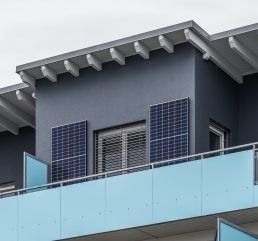
Plug-in solar panels accounted for 200 MW of added photovoltaic power capacity in Germany in the first half of 2024, according to a report in pv magazine, and published onward by online agency Clean Energy Wire. The report cites data from the Federal Network Agency BNetzA, which has simplified registration of plug in solar devices, and recorded around 220 000 new systems installed in the first half of the year. The average registered gross capacity of these systems has increased from 800 W last year to around 900 W this year, the agency said. A total of 9.3 GW of renewable energy systems was commissioned in the first six months of the year, a 5.3 % increase since the end of 2023.
The number of plug-in PV systems – dubbed “balcony power plants” – passed 400 000 earlier this year. Pointing to its simplified registration process, introduced in April, BNetzA said it expected data from the plug-in PV sector to be significantly better than in the previous year. Of the 9.3 GW of renewables added this year, around 7.55 GW are photovoltaics.
“We are seeing a continuous expansion, especially in solar systems,” said BNetzA president Klaus Müller. Since the end of 2023, nearly 10 % more solar power has been added, Müller noted. Two-thirds of that are attributable to PV systems on buildings, including plug-in solar devices.
More than 90 GW of PV capacity has now been installed in Germany. The figure is expected to reach 215 GW by 2030. Germany is aiming for 80 % renewable power in its gross electricity consumption by 2030. Renewable power sources covered around 57% of Germany’s gross electricity consumption in the first half of 2024.






